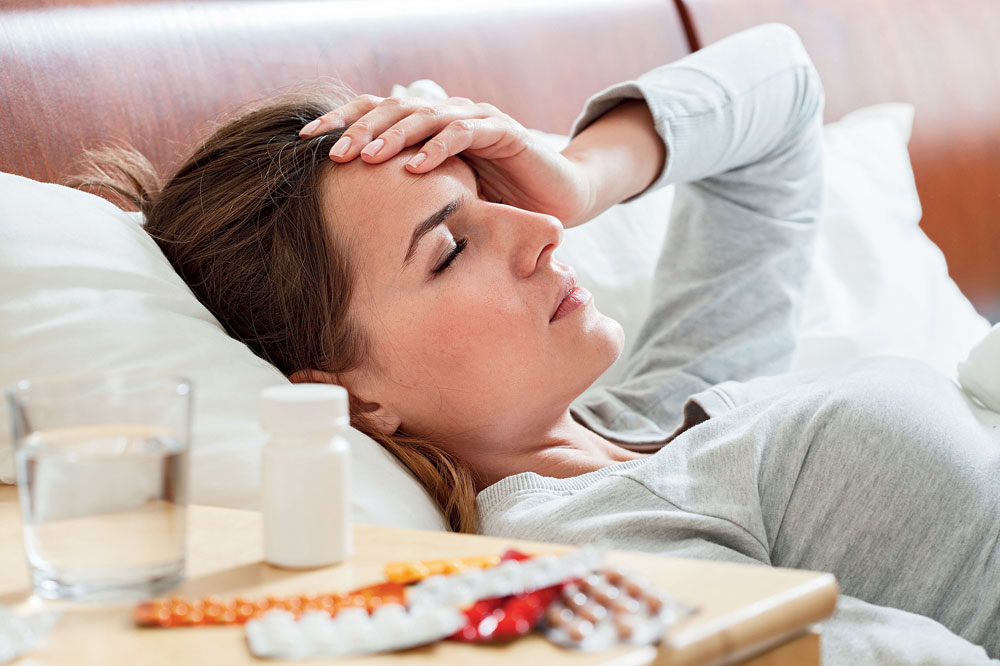Now and then, we hear a lot of youngsters talk about frequent episodic headaches called migraine. It is seen in every seventh person and is prevalent all over the world. Migraine is more prevalent than diabetes, epilepsy and asthma combined.
What is migraine?
Migraine is one of the many forms of recurring pulsating headaches that can be unilateral or bilateral and are associated with symptoms like nausea, vomiting, photophobia (sensitivity to light) and phonophobia (sensitivity to noise). The duration of a migraine attack may vary from a few hours to two-three days.
Going back in time…
The word migraine is derived from the Greek word hemicrania, which means “half the skull”. In 400BC, Hippocrates described in detail the occurrence of migraine attacks, including visual disturbances during migraine aura and the relief experienced from vomiting. Migraine is ranked the sixth most debilitating disease by World Health Organisation and is well known to affect a person’s life personally, professionally and socially. Compared to men, its prevalence is higher among women, almost three times more in women.
Migraine often starts at puberty and mostly affects those in the 35-45 age group. But it can trouble much younger people, including children. About four per cent of boys and girls in prepubertal age suffer from migraine. As children grow, migraine is more predominant among girls.
How to distinguish migraine from headache?
It’s not necessary that every headache that we have is migraine. It’s, in fact, very important to differentiate between a common headache and a typical migraine attack.
- With migraine, the pain is generally on the sides of the head whereas in headaches it’s around the forehead.
- Migraine pain is intense, pulsating and throbbing in nature whereas headaches are generally mild and have a dull pressure.
- Migraine can at times last days whereas headaches are very short-lived.
- Nausea and vomiting are seen in migraine. There are no accompanying features as such in headaches.
- Migraine are recurring whereas headaches are non-recurring.
How is migraine diagnosed?
Migraine remains undiagnosed and under-treated in at least 50 per cent patients. The diagnosis is pretty simple and is made based on a simple questionnaire developed by the International Headache Society. Any other test, like pathological and radiological, is generally done to rule out any other secondary cause of a headache.
The criteria for the diagnosis is…
- More than five attacks per year.
- The duration of headache should be between four and 72 hours.
- Pain characteristics. A) Can be unilateral/ bilateral; B) Pulsating in nature; C) Has a moderate to severe intensity; D) Aggravates on physical exertion.
- Symptoms during attack — you feel nauseated or, at times, may even vomit; photophobia and phonophobia.
What causes migraine?
The causes of migraine are unknown but a few factors trigger the onset of the excruciating pain.
- Hormonal changes: Women may experience migraine symptoms during menstruation due to changing hormone levels.
- Emotional triggers: Stress, depression, anxiety, excitement and shock can trigger a migraine.
- Physical causes: Tiredness and insufficient sleep, shoulder or neck tension, poor posture, and physical overexertion have all been linked to migraine. Low blood sugar and jet lag can also act as a trigger.
- Triggers in the diet: Alcohol and caffeine can trigger migraine. Some specific foods can also have this effect, including chocolate, cheese, citrus fruits. Irregular mealtimes and dehydration have also been named as potential triggers.
- Medication: Some sleeping pills, hormone replacement therapy (HRT) and the combined contraceptive pill have all been named as possible triggers.
- The environment: Flickering screens, strong smells, second-hand smoke and loud noises can set off a migraine. Stuffy rooms, temperature changes and bright lights are also possible triggers.
Management and treatment
Once the diagnosis is confirmed, management and treatment depend on the severity of the symptoms. It may simply involve avoiding triggers, such as being on an empty stomach for long, correcting sleep cycle, avoiding tea/ coffee, sunlight, travelling and so on.
Medicines used for management of the symptoms typically include painkillers, anti-emetics, sedatives and so on. Painkillers should be taken early in the progress of a migraine rather than allowing the headache to develop. All these medications should be taken under the guidance and supervision of a registered healthcare practitioner.
One, however, should focus not on symptomatic relief with such drugs but by incorporating dietary and lifestyle changes along with medicines to treat the root cause of migraine. As per Ayurveda, migraine is an outcome of pitta dosha, which results from bad food combination, eating excessive hot and spicy food, irregular meal timings, overeating, reheating food and long gaps between meals. Also, factors like excessive stress, sleep deprivation, overconsumption of alcohol, tea and coffee, aggravates the pitta in our body. Enough changes should be made in one’s routine to fight the painful disorder — and this should be done not just to stop oneself from being absent at work — because it may lead to anxiety and depression.
Diet and lifestyle
- Have a regular bedtime.
- Incorporate a daily walk routine of at least four kilometres.
- Reduce intake of tea/coffee.
- Avoid heavy, reheated or fermented food.
- Avoid sweets and processed food items.
- Avoid food that’s too hot or cold.
- Avoid alcohol and smoking.
- Add some deep-breathing and non-strenuous exercises to your daily routine.
- Drink lukewarm water.
- Eat light and less spicy food like soups and legumes.
- Switch to rock salt (sendha namak)
- Avoid food that takes time to digest, like red meat, cheese, chocolates and so on.
- Ensure you don’t have constipation.
- Check your Vitamin D and B12 levels.
- Use nasal oil drops every morning (nasyam).
Shikha Prakash is an Ayurvedic consultant at Padaav Speciality Ayurvedic Treatment Centre, Dehradun, and a visiting consultant at AMRI Hospital, Dhakuria











